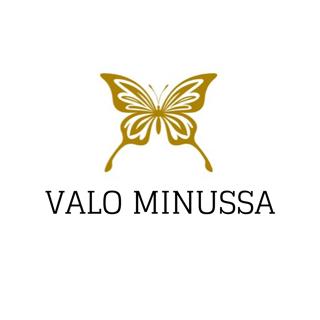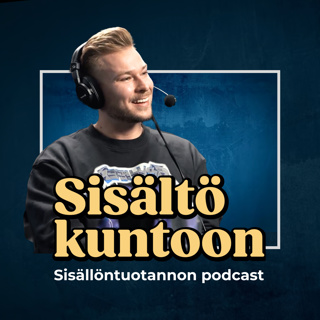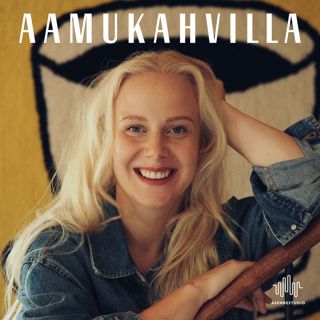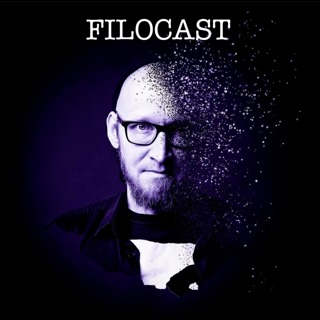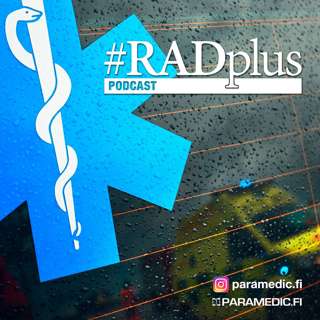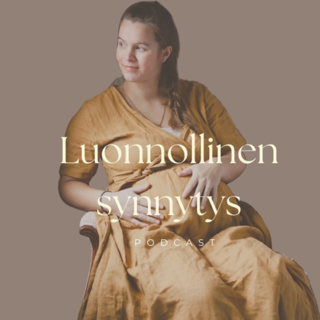
Ep. 130 Technologist Training and Retention with Alisha Hawrylack and Andrew Struchen
We talk with radiologic technologists Andrew Struchen and Alisha Hawrylack about current training pathways for Vascular and Interventional Technologists, the importance of respect at work and in the lab, as well as key factors in recruiting and retaining top notch A-team technologists. --- EARN CME Reflect on how this Podcast applies to your day-to-day and earn AMA PRA Category 1 CMEs: https://earnc.me/xxskLL --- SHOW NOTES In this episode, interventional radiologic technologists Alisha Hawrylack and Andrew Struchen join Dr. Aaron Fritts to discuss the important role of IR technologists in the lab and major factors that affect their recruitment, training, and retention. To start, we discuss the current state of IR technologist training. Alisha describes two major educational pathways, structured training programs and on-the-job training. She says that while both modes of training can be effective, structured training programs are likely to provide deeper knowledge of anatomy and IR procedures. Andrew gives an overview of the yearlong IR technologist program at the University of Virginia, which offers a mix of didactic learning, clinical training, and mentorship. We also briefly outline the ARRT and RCIS certification requirements. Next, we address job satisfaction and turnover of IR technologists. We discuss increasing workload, staffing concerns, and the need to feel engaged in cases. Andrew recognizes that if these problems are not addressed, technologists will start seeking other opportunities, such as careers within industry. Alisha emphasizes that technologists at academic institutions are excited about innovative procedures and seek ways to positively contribute to outcomes. Finally, we discuss team culture and ways to cultivate respectful relationships between technologists and other clinicians. We talk about our experiences with giving team members the benefit of the doubt, learning how to work with other teammates, and resolving miscommunication. --- RESOURCES Charles J. Tegtmeyer Program of Interventional Radiology and Special Procedures at the University of Virginia Medical Center: med.virginia.edu/radiology/educat…ogist-education/ Alisha Hawrylack: ac4nf@hscmail.mcc.virginia.edu Andrew Struchen: ads6r@hscmail.mcc.virginia.edu Association of Vascular and Interventional Radiographers (AVIR): avir.org/ American Registry of Radiologic Technologists (ARRT): https://www.arrt.org/ Registered Cardiovascular Invasive Specialist (RCIS) Exam: cci-online.org/CCI/Certification…OrganizerCommon=2
4 Kesä 202150min

Ep. 129 OBL/ASC Business Pearls with Dr. Jim Melton and Dr. Blake Parsons
We talk with Vascular Surgeon Jim Melton and Interventional Radiologist Blake Parsons about several key pieces to success in the Outpatient (OBL/ASC) setting, including partnerships, staffing, and case selection. --- CHECK OUT OUR SPONSORS Accountable Physician Advisors http://www.accountablephysicianadvisors.com/ Accountable Revenue Cycle Solutions https://www.accountablerevcycle.com/ --- EARN CME Reflect on how this Podcast applies to your day-to-day and earn AMA PRA Category 1 CMEs: https://earnc.me/9keJUq --- SHOW NOTES In this episode, vascular surgeon Dr. Jim Melton and interventional radiologist Dr. Blake Parsons join our host Dr. Aaron Fritts to discuss how they set up the vision and structure of their Outpatient-Based Lab/Ambulatory Surgery Center (OBL/ASC). Dr. Melton begins by describing how he saw a need to make the surgery experience more patient-centered, which ultimately led him to co-found CardioVascular Health Clinic in 2015. He highlights the importance of staffing his clinic with talented individuals and strategies for retaining talent. Dr. Melton also describes how the practice navigates partnerships, pay structures, and expenses. Dr. Parsons shares his advice for marketing OBLs to referring physicians. This includes staying in touch with local providers, keeping them updated on their patients, and hosting educational events. He also covers their clinic’s process of updating and changing technology, which involves team meetings and potential vendor negotiation. Additionally, we cover virtual strategies for communicating with sales representatives during the COVID era. Overall, the doctors emphasize that the OBL path is risky, but it can turn out to be very rewarding for both patients and providers. --- RESOURCES CardioVascular Health Clinic- https://cvhealthclinic.com/ CardioVascular Health Clinic Twitter- @CVHealthClinic Avail Software- https://www.avail.io/
1 Kesä 202136min

Ep. 128 From Gadgeteer to the Boardroom. Device Innovation with IR and CMO Dr. Atul Gupta
We talk with Interventional Radiologist and Philips Chief Medical Officer Atul Gupta about his path from the interventional suite to the boardroom, and how physicians can work with device companies to innovate and make big impact changes in healthcare. --- SHOW NOTES In this episode, Dr. Bryan Hartley discusses the intersection of IR practice and medical device innovation with Dr. Atul Gupta, interventional radiologist and Chief Medical Officer of Philips’ Image-Guided Therapy division. Throughout the show, Dr. Gupta describes his path from medical student, to IR practice builder, to executive leader. Dr. Gupta describes his philosophy of innovation, which stems from the identification of real clinical needs. He explains why interventional radiologists are well-positioned to be device innovators and cross-specialty collaborators (Hint: It has to do with our curiosity and cool technology!). He recalls innovative mentors, or “gadgeteers,” who have inspired him to work on research projects during residency and onwards. As a result, Dr. Gupta’s work with Philips grew into a partnership and, eventually, a formalized role within the company. In addition to serving as a CMO, Dr. Gupta maintains his clinical skills by continuing to practice IR when he can. To close, we discuss exciting new topics that are on the horizon of image-guided therapy: augmented reality, artificial intelligence, and dielectric imaging. We also highlight tips for any physician who is wanting to get involved with device innovation, as well as any physician who is contemplating a new role. --- RESOURCES Philips Image Guided Therapy- https://www.usa.philips.com/healthcare/solutions/interventional-devices-and-therapies “The Infinite Game” by Simon Sinek A book that Dr. Hartley recommends for anyone interested in learning how to motivate their teams to achieve long-term success.
21 Touko 202141min

Ep. 127 Portal Hypertension and Ascites Management with Hepatologist Dr. Parvez Mantry
Interventional Radiologist Christopher Beck talks with Hepatologist Parvez Mantry about the management of Portal Hypertension and Ascites, and the importance of multi-disciplinary collaborative care for these patients. --- SHOW NOTES In this episode, hepatologist Dr. Parvez Mantry joins our host Dr. Christopher Beck to discuss portal hypertension and ascites, two complications that arise from liver diseases and have a large effect on patients’ quality of life. Dr. Mantry starts the episode by sharing statistics on Chronic Liver Disease (CLD) and specifically highlights the burden of CLD on the U.S. population. He discusses various causes of CLD, including Hepatitis C, Alcohol Liver Disease, and Non-Alcoholic Steatohepatitis. Next, Dr. Mantry takes us through his diagnostic workup, including his physical examination, cross-sectional imaging, percutaneous and transjugular liver biopsies, and serological workup. He checks for complications such as portal hypertension, ascites, pedal edema, and hepatic encephalopathy. We also discuss the diagnosis of Hepatocellular Carcinoma (HCC). Then, we transition to strategies for managing ascites and portal hypertension through diuretics, paracentesis, Transjugular Intrahepatic Portosystemic Shunts (TIPS), liver transplantation, and a few experimental treatments that he is currently researching. Overall, Dr. Mantry advocates for close monitoring of symptoms and making treatment modifications as needed. Finally, when focusing on the patient experience, Dr. Mantry offers troubleshooting tips, especially for patients who struggle with leakage from the paracentesis site. To close, he gives insights on how physicians can best support chronically-ill patients who are awaiting transplantation. --- RESOURCES Methodist Transplant Specialists- https://www.theliverinstitutetx.com/ Information about Dr. Mantry’s transplant center and its satellite locations in the Dallas-Ft. Worth Community. American Association for the Study of Liver Diseases (AASLD) Practice Guidelines- https://www.aasld.org/publications/practice-guidelines Management of HCC- https://www.journal-of-hepatology.eu/article/S0168-8278(12)60009-9/pdf The Management of Ascites in Cirrhosis- https://aasldpubs.onlinelibrary.wiley.com/doi/abs/10.1053/jhep.2003.50315 These are guidelines set by the International Ascites Club. BackTable Pdcast Ep. 123 TIPS University Freshman Year: Referrals and Pre-Op Workup- https://www.backtable.com/shows/vi/podcasts/123/tips-university-freshman-year-referrals-pre-op-workup
17 Touko 202150min

Ep. 126 TIPS University Senior Year: Gunsight Technique and Splenic Closure with Dr. Lynskey
It's Senior Year at TIPS University with Dr. Emmett Lynskey talking us through his Gunsight technique for TIPS placement, as well as how to perform a safe closure of splenic access. Don't miss the first three parts of the series as well! --- EARN CME Reflect on how this Podcast applies to your day-to-day and earn AMA PRA Category 1 CMEs: https://earnc.me/MThuo7 --- SHOW NOTES In this episode, Dr. Emmett Lynskey joins Dr. Chris Beck for the final edition of TIPS University to discuss the gunsight technique and splenic closure. We begin by discussing where to start once the catheter is in the portal vein and you have access, and Dr. Lynskey shares why he likes to use a 8mm balloon for the angioplasty. We explain the details of the gunsight technique, how to line up the portal and hepatic snare, how to adjust the view, and how to get access to both veins using a 22 gauge chiba needle. We share why it is important to make sure that the cranial caudal difference between the portal and hepatic snare is not significant before you gunsight. We discuss how to work with wires to floss through the splenic vein. Dr. Lynskey tells us why he uses a microcatheter for an extra step instead of snaring the end of the wire. We review some situations where you can throw the snare up and stick it with a colapinto needle and some of the considerations for portal vein thrombosis when doing TIPS. We discuss splenic access and why it is important to set up for good closure. We explain the different options for splenic access, using a combination of coils, plugs, and gelfoam, and Dr. Lynskey shares which combinations he prefers to use for splenic closure. We review the technique to get images using fluoro and ultrasound.
14 Touko 202133min

Ep. 125 TIPS University Junior Year: Advanced Techniques, ICE, and Splenic Access with Dr. Lynskey
It's Junior Year at TIPS University with Dr. Emmett Lynskey walking through advanced techniques for TIPS, including using Intracardiac Echocardiography (ICE) for placement, as well as transsplenic access for portal reconstruction. --- EARN CME Reflect on how this Podcast applies to your day-to-day and earn AMA PRA Category 1 CMEs: https://earnc.me/Il3qDw --- SHOW NOTES In this episode, Dr. Emmett Lynskey joins Dr. Chris Beck for the third edition of TIPS University to discuss intracardiac echo (ICE) and splenic access in TIPS procedures. We discuss the learning curve associated with ICE and Dr. Lynskey tells us about the early challenges he faced when learning this technique. We share why using ICE is helpful in TIPS and how to set up the procedure, depending on the type of access you want. We explain how to get a more medial throw by getting the catheter closer to the portal vein, and we discuss how to torque the needle for different throws. We discuss making throws using an ICE probe and why ICE is helpful for acutely thrombosed TIPS revisions. Dr. Lynskey tells us about some other good uses for the ICE catheter. We discuss splenic access, and we review the conditions that allow for safe splenic access. We explain how to do the ultrasound evaluation anterior to the probe. Dr. Lynskey shares why he dedicates one hand for the wire and one hand for the ultrasound, and he tells us how he picks the sheaths and wires that he uses to get splenic access. We discuss how to know that you have opened up the splenic vein. --- RESOURCES Edward Jones Financial Advisor Yaphet Tadesse: https://www.edwardjones.com/us-en/financial-advisor/yaphet-tadesse
10 Touko 202157min

Ep. 124 TIPS University Sophomore Year: Basic Procedure Techniques with Dr. Emmett Lynskey
It's Sophomore Year at TIPS University with Dr. Emmett Lynskey and Dr. Christopher Beck discussing basic procedure technique for Transjugular Intrahepatic Portosystemic Shunts (TIPS). --- EARN CME Reflect on how this Podcast applies to your day-to-day and earn AMA PRA Category 1 CMEs: https://earnc.me/jfkcyQ --- SHOW NOTES In this episode, Dr. Emmett Lynskey joins Dr. Chris Beck for the second edition of TIPS University to discuss basic TIPS procedure techniques. Dr. Lynskey starts us off by talking through the steps of getting access for a basic TIPS procedure, and he tells us how to check if there is a large difference between wedge pressure and the true portal pressure. Next, we discuss doing a puff or a run of the vein to make sure that there is no obstruction of outflow. Dr Lynskey compares new and old techniques for getting the sheath into the vein, and he explains two different methods, bare back and over the wire, for getting the needle down for the TIPS procedure. We outline what you should expect to see after doing a puff of contrast, how to locate the central portal vein, and the differences between using CO2 and contrast. Dr. Lynskey shares what factors he considers when choosing a wire for TIPS and how he uses a pigtail and a sheath to perform a dual run. We review the purpose of a dual run and discuss the details of opening the tip once the sheath is down. We then compare the final steps of the TIPS procedure based on whether or not you will embolize, and give a brief overview of embolizing using a fogarty balloon. Dr. Lynskey goes over his goal frame rate for the final run of the TIPS, and he explains how to check the flow dynamic of blood going to the liver. He tells us about follow-up care and how it changes if a patient develops encephalopathy. We end the episode by discussing the importance of counseling patients and caretakers on medications.
7 Touko 20211h 4min

Ep. 123 TIPS University Freshman Year: Referrals and Pre-op Workup with Dr. Emmett Lynskey
We start our TIPS University series with Interventional Radiologist Dr. Emmett Lynskey discussing referral sources and pre-operative workup, including the importance of patient selection and MELD score. --- EARN CME Reflect on how this Podcast applies to your day-to-day and earn AMA PRA Category 1 CMEs: https://earnc.me/GKHtWA --- SHOW NOTES In this episode, Dr. Emmett Lynskey joins Dr. Chris Beck for the first edition of TIPS University to discuss referrals and pre-op for transjugular intrahepatic portosystemic shunts (TIPS). Dr. Lynskey begins by telling us about his fellowship at Georgetown, his current practice, and how he became interested in portal hypertension. We talk through the most common indicators for a TIPS procedure, including refractory ascites, portal vein thrombosis, and acute bleeders. Dr. Lynskey explains how patients are referred to him, and he outlines what factors he considers before determining the eligibility for TIPS. We then discuss how useful cross sectional imaging is, and we break down the Model for End-Stage Liver Disease (MELD) score. Dr. Lynskey shares the components that make up the MELD score as well as the cutoffs and thresholds for a TIPS patient. Next, we review diuretics and emphasize the importance of being honest with patients regarding expectations post-procedure. We explain how to phrase questions when working with cardiologists. Dr. Lynskey goes over what all he can determine from cross-sectional imaging prior to the procedure, and he tells us when he might consider an alternative to TIPS. We discuss which labs should be done the day of the procedure and why Dr. Lynskey gets MELD labs again just before the TIPS. Dr. Lynskey tells us about blood typing, crossmatching, and fibrinogen levels. The episode wraps with Dr. Lynskey explaining the benefits of performing a paracentesis prior to TIPS. --- RESOURCES Edward Jones Financial Advisor Yaphet Tadesse: https://www.edwardjones.com/us-en/financial-advisor/yaphet-tadesse
3 Touko 202143min









